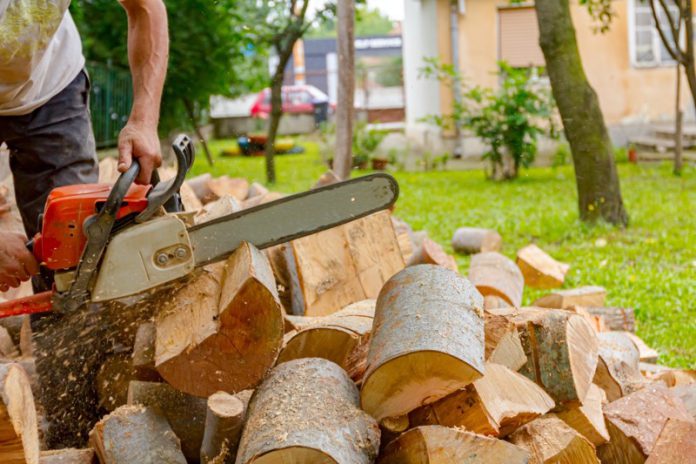Among the yard tools in your shed or garage, you likely have a rake, hoe, and shovel. It’s entirely possible you also have other tools like a lawnmower or weed whacker. Another sometimes overlooked tool that you should add to your maintenance toolbox is a chainsaw. Chainsaws are a powerful and useful tool for gardening, yard work, tree-trimming, and maintenance. If you need a large branch cut or several hedges trimmed, a chainsaw comes in handy. Buying a chainsaw is just like picking out any other tool. It’s not as easy as just picking up a post-hole digger and building a fence, but it’s not as complicated as making sure you don’t violate any of the terms of your homeowner’s insurance. There are certain criteria to follow, various aspects of the job to consider, and finding one that matches a price point with which you’re comfortable. Here are five things to look for in your next chainsaw purchase.
Blade Size
One of the single most important things regarding your chainsaw is its blade size.
The blade is the single component that’s going to be doing the cutting. Sure, the motor drives the blade and the guard protects the user from having it cause damage or fly back, but ultimately the blade determines how well it’s going to cut. The size of the blade should match the scope of the work at hand. Heavy duty work that requires extensive cutting and a lot of power might require larger blade sizes. Blade sizes should be at least two inches thicker than the wood that needs to be cut.
Power Supply
Chainsaws have a lot of power to them. They are power tools, after all. The type of power supply is either going to be electric or gas. Electric chainsaws offer more lightweight, compact, and quieter operation. On the downside, they’re not as powerful as a gas-powered chainsaw. They’re perfect for light trimming, mulching, and small tasks. These tools run on power cords or batteries. For more power, a gas-powered chainsaw is going to offer an entire world of difference. They’re made for heavy work and can definitely handle it. They can be a bit loud and difficult to hold for longer periods, but their power is unmatched by their electric counterparts. They might be a little higher on the cost end of the equation, too, so be sure to understand your needs and scope before choosing your chainsaw.
Type of Work
When you’re selecting a chainsaw, the type of work you’re doing matters significantly. Why? Because the scope of work determines the size of the tool you’ll need. Larger chainsaws can be unwieldy and much heavier than their smaller counterparts. This means that they can be a little bit more dangerous to work with and present more risk if mishandled. The size of the guide bar matters and can determine how easy or difficult the saw might be to handle. If the work only requires cutting some small limbs and smaller branches, then a lightweight saw will work best. More frequent work would benefit from a mid weight saw, while heavy duty stuff will require something much larger. Of course, for extremely heavy duty work it may be better just to hire it out.
Power Rating
Chainsaws all have specific power ratings. These consist of the amperage of the motor. Most are around eight amps (which is pretty powerful for a tool), but might go as high as the 12 – 15 amp range. For a decent power rating, using a powerful EGO chainsaw with a battery and recharging kit is 56 volts of branch-sawing power. At over 11,000 RPM and utilizing an efficient brushless motor, most EGO chainsaw models are high-power tools that can handle any job.
Additional Safety Features

Like many other power tools, chainsaws do tend to come with additional features. Most of the time, these involve safety. Remember that using protective goggles and gloves while working with the chainsaw are only part of the safety equation. Additional features help you stay safe while working with this awesome tool. Safety features can run the gamut between kickback reduction features to guide bars, chain catchers, and chain brakes. Safety features are especially important when using a chainsaw, so be sure to inspect the tool every time prior to use.















